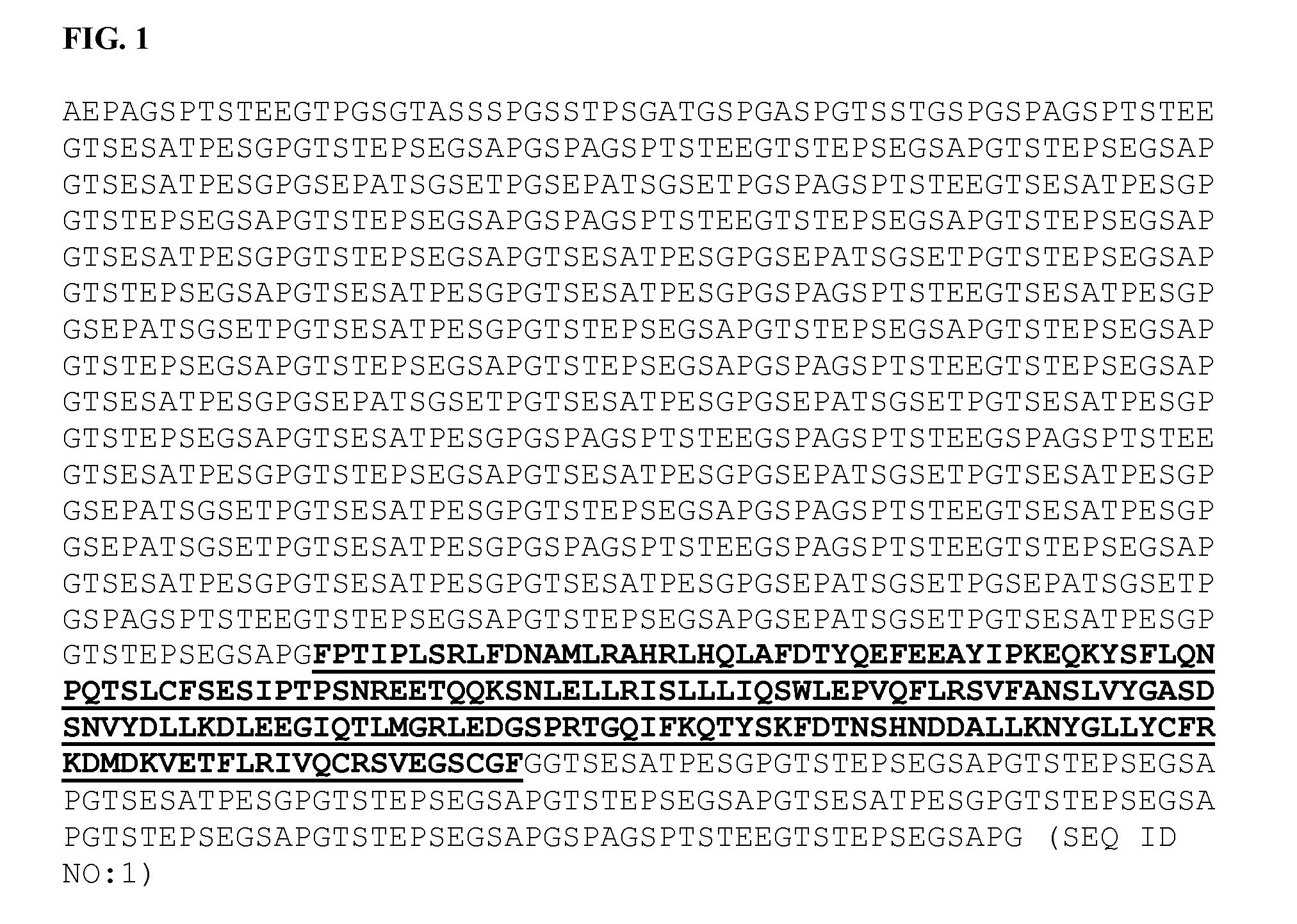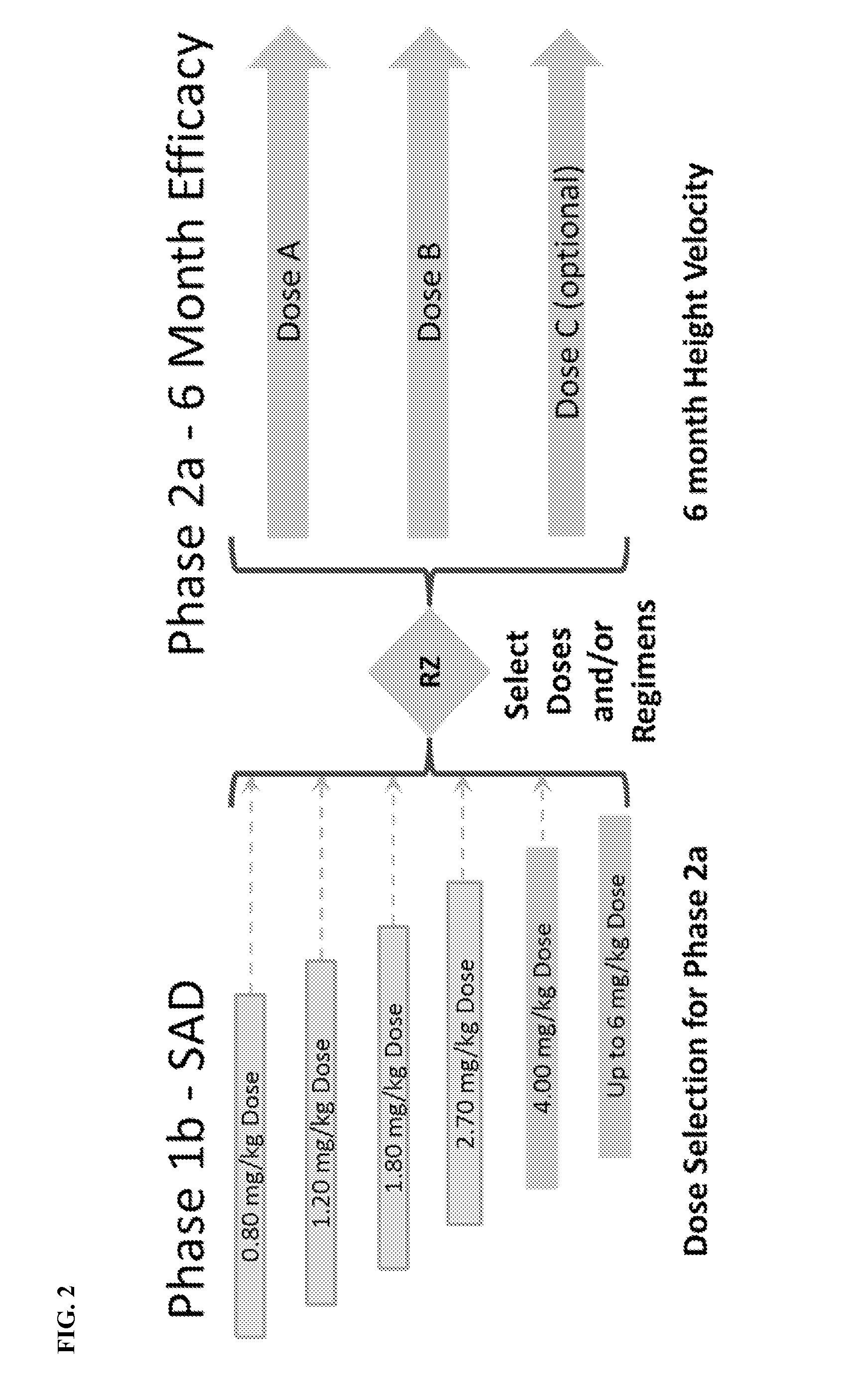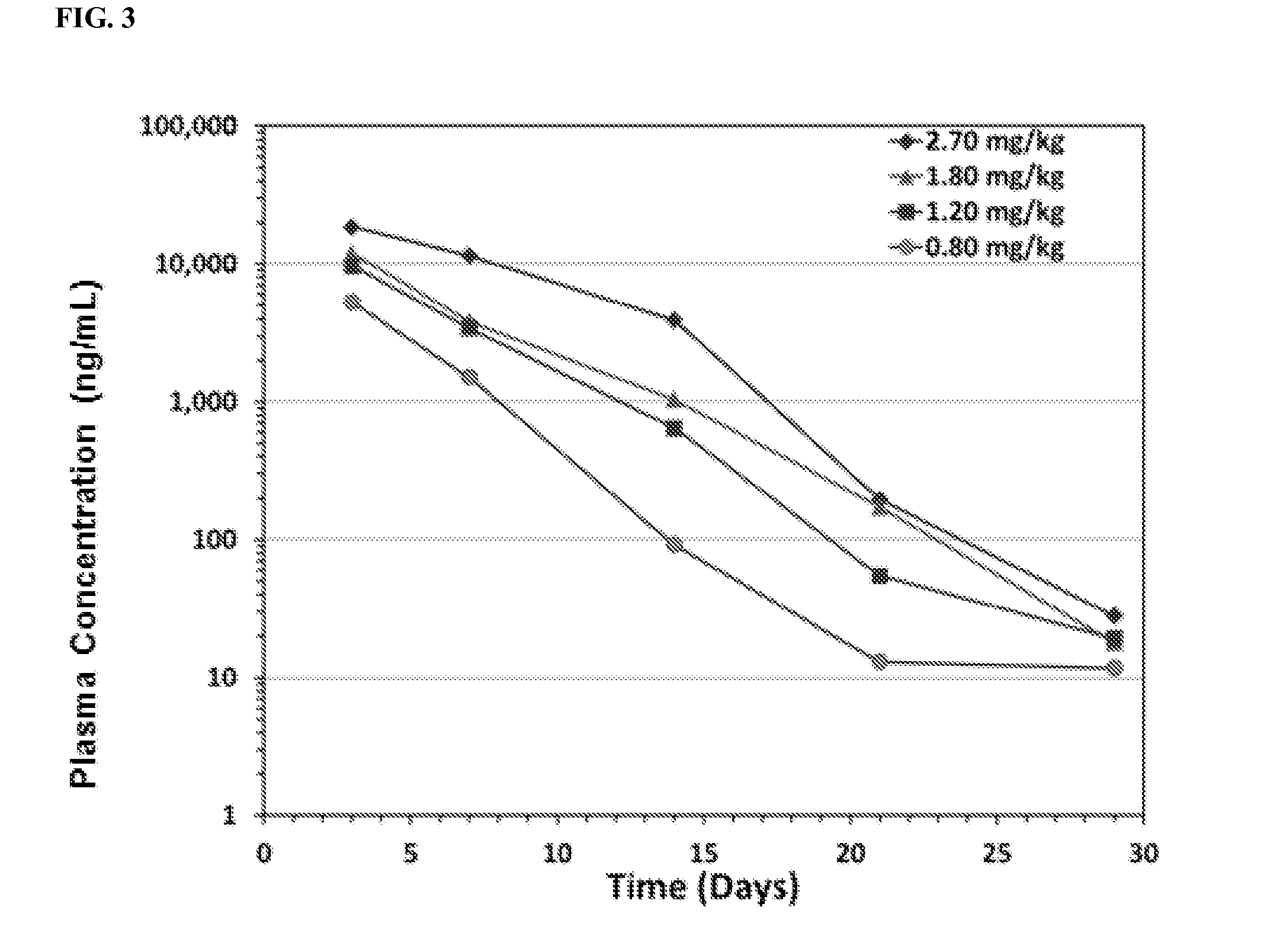Treatment of pediatric growth hormone deficiency with human growth hormone analogues
a technology of growth hormone and analogues, which is applied in the direction of growth hormones, drug compositions, peptide/protein ingredients, etc., can solve the problems of injection reactions, mild to moderate headache, nausea, vomiting,
- Summary
- Abstract
- Description
- Claims
- Application Information
AI Technical Summary
Benefits of technology
Problems solved by technology
Method used
Image
Examples
example 1a
Single Dose Results
[0236]A Phase 1b / 2a trial of the safety, the pharmacokinetics (PK) and pharmacodynamics (PD) of a single dose of a human growth hormone analogue (a human growth hormone-XTEN (hGH-XTEN) fusion protein shown as SEQ ID NO:1, FIG. 1) for subcutaneous (SC) administration in pediatric patients with growth hormone deficiency was conducted. Based on the safety profile in GHD adults (Yuen, K. C. et al. The Journal of Clinical Endocrinology and Metabolism 98, 2595-2603 (2013) and the potential to achieve once-monthly dosing, the Phase 1b / 2a study in GHD children determined (i) the safety, tolerability, PK, and IGF-I responses to a single dose of the hGH-XTEN fusion protein in GHD children (Phase 1b); and (ii) the 6 month height velocity (Phase 2a) using fusion protein dosing regimens that normalize IGF-I.
[0237]The study was designed to enroll up to 72 naïve-to-treatment, pre-pubertal children. Key inclusion criteria are pre-pubertal status, short stature (HT-SDS≦−2.00), GHD...
example 1b
Single Dose Results
[0247]Currently approved growth hormone drugs require daily injections and consequently pose considerable challenges to patients with GHD. In contrast, a human growth hormone analogue (a human growth hormone-XTEN (hGH-XTEN) fusion protein shown as SEQ ID NO:1 (FIG. 1) is being developed to provide up to once-monthly dosing, to facilitate an improvement in patients' ability to adhere to their therapy regimen, and to improve their overall treatment outcomes.
[0248]Data were gathered from a Phase 1b / 2a Study of a new long-acting human growth hormone (hGH-XTEN fusion protein) in pre-pubertal children with growth hormone deficiency (GHD). The objectives of the Phase 1b study were to evaluate the single dose safety, tolerability of the hGH-XTEN fusion protein in pediatric GHD patients; and to determine PK (hGH-XTEN fusion protein concentrations) and PD (IGF-I, IGFBP-3) profiles over 30 days.
[0249]The clinical trial enrolled up to 72 naïve-to-treatment, pre-pubertal child...
example 2
Repeat Dosing Results
[0262]VRS-317 is a novel fusion protein (M.W. 119 kDa) consisting of rhGH with amino acid sequences (XTEN) attached at the N- and C-termini, SEQ ID NO:1, FIG. 1. In Phase 1 studies in GHD adults and children, VRS-317 concentrations, IGF-I and IGFBP-3 responses were proportional to dose, with drug concentrations and increases in IGF-I and IGFBP-3 still present 30 days after a single subcutaneous injection. Single dose VRS-317 administration has been safe and well tolerated, with minimal injection site discomfort; no new safety signals compared to daily rhGH products have emerged.
[0263]A repeat dosing study was conducted to determine the safety, tolerability, height velocity, IGF-I and IGFBP-3 responses after 6 months of VRS-317 treatment. The primary endpoint is mean 6-month height velocity. Subjects were all pre-pubertal and naïve to rhGH treatment. GHD was diagnosed by short stature (HT-SDS<−2), delayed bone age, paired GH stimulation tests (GHmax≦10 ng / mL), a ...
PUM
| Property | Measurement | Unit |
|---|---|---|
| Fraction | aaaaa | aaaaa |
| Fraction | aaaaa | aaaaa |
| Fraction | aaaaa | aaaaa |
Abstract
Description
Claims
Application Information
 Login to View More
Login to View More - R&D
- Intellectual Property
- Life Sciences
- Materials
- Tech Scout
- Unparalleled Data Quality
- Higher Quality Content
- 60% Fewer Hallucinations
Browse by: Latest US Patents, China's latest patents, Technical Efficacy Thesaurus, Application Domain, Technology Topic, Popular Technical Reports.
© 2025 PatSnap. All rights reserved.Legal|Privacy policy|Modern Slavery Act Transparency Statement|Sitemap|About US| Contact US: help@patsnap.com



